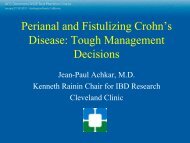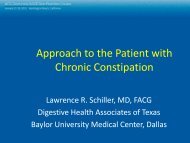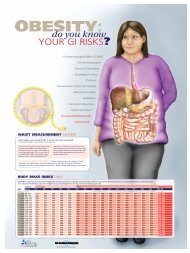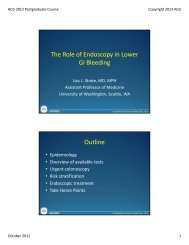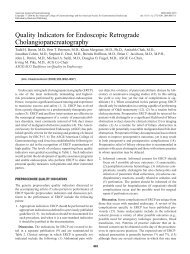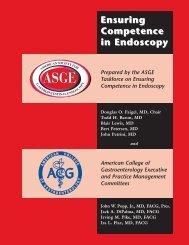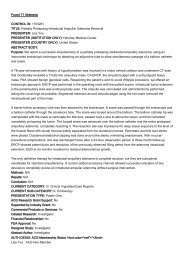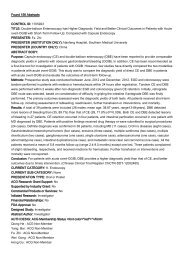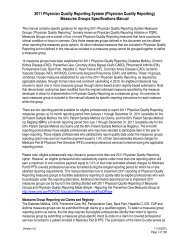Pregnancy
Pregnancy
Pregnancy
You also want an ePaper? Increase the reach of your titles
YUMPU automatically turns print PDFs into web optimized ePapers that Google loves.
Hyperemesis Gravidarum and Nutritional Support<br />
................................................................................................................................................................<br />
receive at least 400 mcgs of folic acid per day to help<br />
prevent neural tube defects.<br />
Venous Access<br />
Most of the reported complications of TPN use in<br />
hyperemesis have been related to the placement and<br />
use of a central venous catheter. These have included<br />
complications common to all patients including, bacteremia,<br />
sepsis, pericardial tamponade and subclavian<br />
vein thrombosis. While there is a know increase in hypercoagulability<br />
in pregnancy, the few reports of TPN<br />
use in pregnancy do not reveal an increased rate of<br />
central line occlusion or venous thrombosis.<br />
Monitoring of Pregnant Patients on TPN<br />
All pregnant women requiring parenteral nutrition<br />
should be closely monitored to prevent any possible<br />
complications. Biweekly laboratory evaluation including<br />
a basic electrolyte panel should be performed<br />
and an expanded panel including liver function and<br />
coagulation studies at least every other week once the<br />
patient is stable. Particular attention must be paid to<br />
any sudden increases in weight or blood sugar and<br />
the TPN formulation adjusted accordingly. As in any<br />
pregnant woman, glucose tolerance should be reassessed<br />
at 20 weeks to watch for the possible development<br />
of gestational diabetes. If this occurs, it is treated<br />
by lowering of carbohydrate intake, if possible and the<br />
administration of parenteral insulin as required. Nitrogen<br />
balance studies and possible fetal sonography may<br />
be useful in monitoring the nutritional status of the<br />
mother and fetus. Close communication between the<br />
nutrition support team and obstetrician should avoid<br />
any potential problems.<br />
...................................................................................................................................................................................<br />
29




